Surface Treatment 14882
March 9, 2004
Originally Published MPMNMarch 2004
OutsourcingOutlook
Surface Treatment
Electrical Surface Treatment Optimizes Coating Adhesion
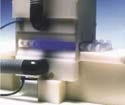 Processing up to 1000 parts per minute, an electrical surface treatment system is used to optimize the adhesion of printing inks and coatings onto polymer materials such as polyethylene, polypropylene,and polytetrafluoroethylene. Suitable for disposable syringes, the 360° noncontact process system features an integrated watt-densitycontrol to ensure uniform treatment at changing line speeds. Tantec Inc.,Schaumburg, IL www.tantecusa.com
Processing up to 1000 parts per minute, an electrical surface treatment system is used to optimize the adhesion of printing inks and coatings onto polymer materials such as polyethylene, polypropylene,and polytetrafluoroethylene. Suitable for disposable syringes, the 360° noncontact process system features an integrated watt-densitycontrol to ensure uniform treatment at changing line speeds. Tantec Inc.,Schaumburg, IL www.tantecusa.com
Plasma Technology Treats Contaminants at the Nanometer Level
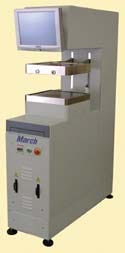
When noncompatible materials create difficulties in the assembly process, plasma treatment can remove contaminants at the nanometer level. The FlexTrak automated plasma system also enables microetching, promotes cross-linking, and activates and changes surfaces from hydrophobic to hydrophilic. Modifying surface energies, the system's three-axis symmetrical chamberand proprietary process control provide treatment uniformity and short cycle times. The company's software offers agraphical interface for touch screen programming. March Plasma Systems, Concord, CA
www.marchplasma.com
Performance Coatings Add Specific Surface Properties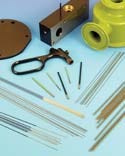 Performance coatings enhance chemical or corrosion resistance,and provide electrical insulation, nonwetting characteristics, and dry lubrication. Designed to add specific surface properties to parts, the coatings include Teflon for high lubricity, and nonstick and nonwetting qualities up to 550°F, and Halar for electrical insulation. Additional options are Kynar, which exhibits strength andtoughness, and impact-, corrosion-,and abrasion-resistant nylon. Suitable for parts ranging from less than an ounce to 2000 lb, the coatings can be applied from 0.0002 to 0.020 in. thick, depending on the coating and substrate. Products such as hypotubes, surgical instruments, probes, mandrels, core wires, valve components and housings, solenoids, and process equipment can be coated.Applied Plastics Company, Inc., Norwood, MA www.appliedplastics.com
Performance coatings enhance chemical or corrosion resistance,and provide electrical insulation, nonwetting characteristics, and dry lubrication. Designed to add specific surface properties to parts, the coatings include Teflon for high lubricity, and nonstick and nonwetting qualities up to 550°F, and Halar for electrical insulation. Additional options are Kynar, which exhibits strength andtoughness, and impact-, corrosion-,and abrasion-resistant nylon. Suitable for parts ranging from less than an ounce to 2000 lb, the coatings can be applied from 0.0002 to 0.020 in. thick, depending on the coating and substrate. Products such as hypotubes, surgical instruments, probes, mandrels, core wires, valve components and housings, solenoids, and process equipment can be coated.Applied Plastics Company, Inc., Norwood, MA www.appliedplastics.com
Treatment Increases Surface Energy for Printing
As an alternative to chemical priming and etching processes, a 3-D air-plasma surface treatment improves surface adhesion for printing, painting, coating, bonding, and labeling. The design of the Dyne-A-Mite HP treater generates a blown arc discharge suitable for high line speeds. Capable of treating 3-D objects and 2-D plastics, the process can be used with such materials as polyethylene, polypropylene, polyethylene terephthalate, PVC, thermoplastic polyurethane, vinyl, polystyrene, polycarbonate, and types of thermoformed and thermoset plastics. It is suitable for extruded, pultruded, molded, and formed materials. The surface treatment enables high-quality printing on plastic parts, resulting in clear readable markings on polymer surfaces and good adhesion of labels and coatings. Enercon Industries Corp., Menomonee Falls, WI www.enerconind.com
Spray System Provides Touch-Up and Coating Options  A cartridge-based dispensing system uses air pressure to apply reactive, fast-curing compounds. The HSS system features a spray nozzle designed for the company's Ratio-Pak dual cartridges, which come in ratios from 1:1 to 25:1 and capacities from 100 to 1500 ml. The nozzle can be used at various low pressures, for cold-spray meter-mix coating, and with liner application equipment. Suitable for lab testing and compound development, the equipment can also be used for in-field demonstrations, touch-ups, small-volume coating, and sealant, foam, and liner projects. The company's finishing machines perform tasks such as automated assembly, labeling, andhot stamping. Plas-Pak Industries Inc., Norwich, CT www.plaspakinc.com
A cartridge-based dispensing system uses air pressure to apply reactive, fast-curing compounds. The HSS system features a spray nozzle designed for the company's Ratio-Pak dual cartridges, which come in ratios from 1:1 to 25:1 and capacities from 100 to 1500 ml. The nozzle can be used at various low pressures, for cold-spray meter-mix coating, and with liner application equipment. Suitable for lab testing and compound development, the equipment can also be used for in-field demonstrations, touch-ups, small-volume coating, and sealant, foam, and liner projects. The company's finishing machines perform tasks such as automated assembly, labeling, andhot stamping. Plas-Pak Industries Inc., Norwich, CT www.plaspakinc.com
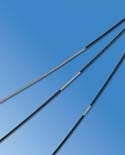 Laser System Enables Surface Ablation
Laser System Enables Surface Ablation
Ablation of metals, ceramics, or polymers is performed using a laser treatment process. With the same technology, material surfaces can be furnished with structures in the micron range, for example, for optimizing ingrowth of implants. The ablation process is characterized by short, energetic laser pulses. The precise control of the system enables microstructures smaller than 15 µm as well as the ablation of entire surface layers. Carl Baasel Lasertech GmbH, Starnberg, Germany www.rofin.com
Parylene Offers Biostability and Biocompatibility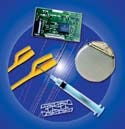
A parylene variant offers lubricity, UV stability, dielectric strength, and critical component protection at higher temperatures than traditional parylenes C, N, and D. Parylene HT accommodates temperatures up to 450°F, and provides a barrier against chemicals and moisture. Used on stents, catheters, mandrels, tubing, and electronic components, the biocompatible and pinhole-free parylene is applied via gas phase deposition for a conformal coating.Specialty Coating Systems, Indianapolis, IN www.scscookson.com
Copyright ©2004 Medical Product Manufacturing News
You May Also Like
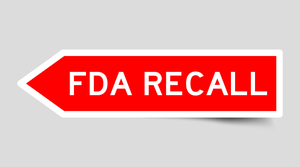
.png?width=300&auto=webp&quality=80&disable=upscale)
